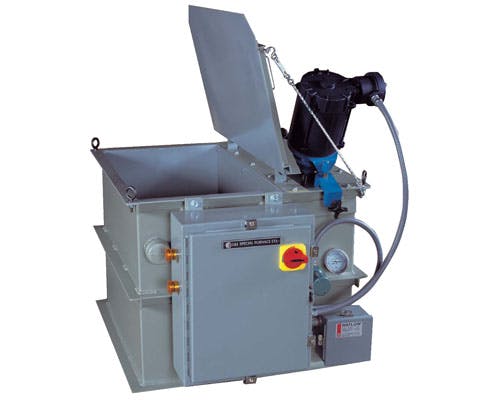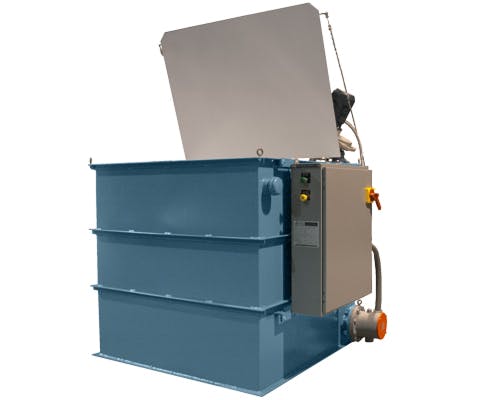Quenching is the rapid cooling of hot metal in a liquid or gas medium to preserve certain mechanical qualities it received through previous heat treatment methods. Chemical reactions and structural changes occur within the metal during heat treatment, and quenching can be viewed as a way to lock those desirable changes in place. However, that is not the only reason to use quenching. It can increase the hardness of metals and even prevent the development of undesirable traits that may occur if the cooling of a part is not strictly regulated. It is an essential part of the overall heat treatment process.
How Quenching Works

The first step when quenching a metal part is the initial heat treatment. If the part is not heated to the right temperature, it will not receive the full benefits that quenching can provide. For steels, in particular, the goal is often to heat them to a point above the austenite temperature. Holding the part at this temperature for a set amount of time (depending on the type of steel and the dimensions of the part) will cause it to transition to the martensite stage. This is typically the stage quenching is used to preserve. Other stages that are less frequently desired are ferrite, pearlite, cementite, and bainite.
Once the part has achieved the desired state, it is submerged in a predetermined quenching media at a predetermined rate. The media to which the part is exposed and the rate at which it is quenched depend on the type of part, the metal it is made of, and the final properties that are desired.
Quench Rate

Quench rate refers to the speed at which a part is cooled within a quench media. The faster the quench rate, the less time there is for the internal chemical reactions caused by the heat treatment to revert. This means that parts that are quenched faster retain more of their beneficial properties. Because of this, a fast quench is typically preferred. However, slower quenches are sometimes required in order to protect the part from cracking or distorting. Exactly how fast each part should be quenched depends on a wide variety of variables and can be very complex to determine.
Quench Media
Quench media refers to the substance in which a heat treated part is submerged to cool it down. There are three main categories of quench media, and which one you use will affect both the quench rate and potential for part warping. These three categories are gasses, oils, and aqueous solutions such as plain or salt water and water-soluble polymer solutions. Additionally, parts can either be submerged within the quench media or have the media forced over them. Forced media has a faster quench rate than stagnant quench media, and is just one more way in which the rate can be manipulated to produce the desired results. Quench speed is critical to retaining austenite in the quenched part.
Gasses
Gasses have the slowest quench rate of the three main categories of quench media. Common gasses include air, nitrogen, and argon. While some parts are quenched in standing gas, it is more common to speed up the process by forcing the gas over the part.
Oils

Oils have a quench rate that is faster than gasses, but slower than water-based quenchants. Common oils include mineral oil, whale oil, cottonseed oil, and synthetic oils — which have recently become the most popular choice. One key benefit oils have over aqueous quenchants is that there is a reduced chance that parts quenched in them will warp.
However, oils also have flash points that need to be considered when making your selection. Above a certain temperature, the oil will ignite. This flash point is different for each type of oil, so will need to match your heat treatment temperature to your quenching oil. If you are heating a part to 850°C (1550°F), the oil you are using must have a flash point at a higher temperature.
Aqueous Quenchants
Aqueous quenchants are chemical mixtures with water and include water-soluble polymer solutions and water by itself. They have the fastest quench rate of all three media categories and can be used to bring metals to maximum hardness, but with the possibility of cracking due to too-rapid cooling. Water quenching is used in aluminum solution heat treatment.
Conclusion
Quenching is the cooling part of the heat treatment process that comes after other heat treatment has been performed on a part. By submerging hot metal into a quench media, it can be rapidly cooled and therefore retain the beneficial properties it gained through the heating process. Different quench rates and media are used for different metals, temperatures, and desired outcomes.
L&L Special Furnace
L&L Special Furnace manufactures industrial quench tanks for a variety of uses and quench media, including gasses, oils, and aqueous solutions. Contact us today for more information on our quench tank specifications and help selecting which tank is right for your particular need.
